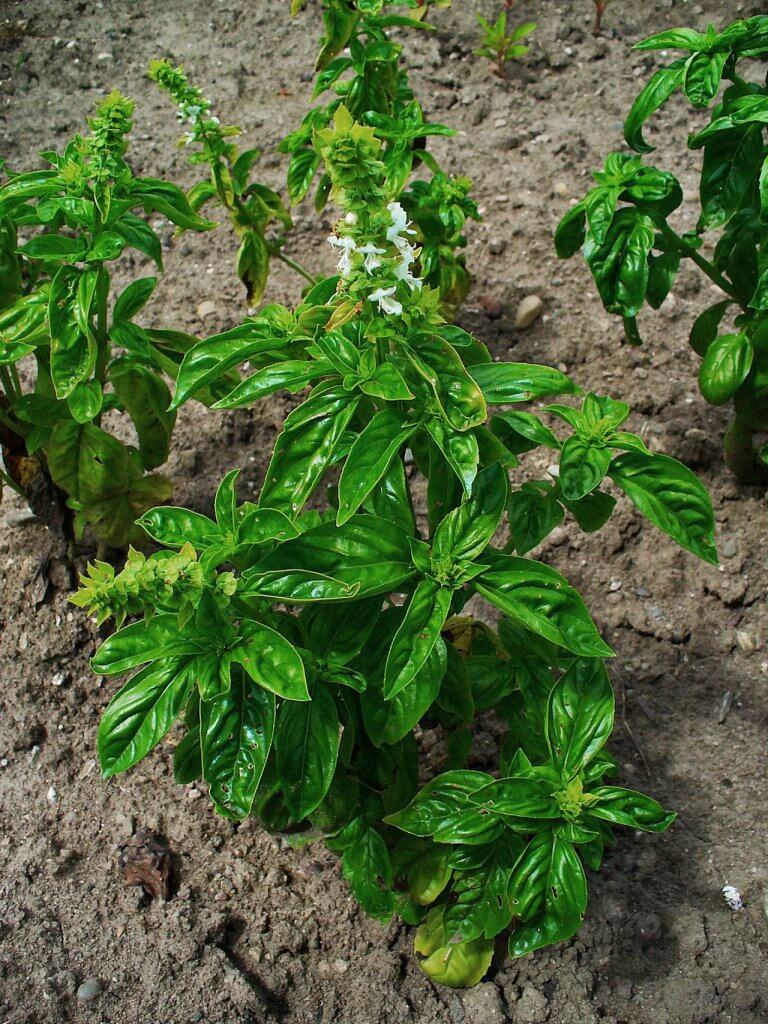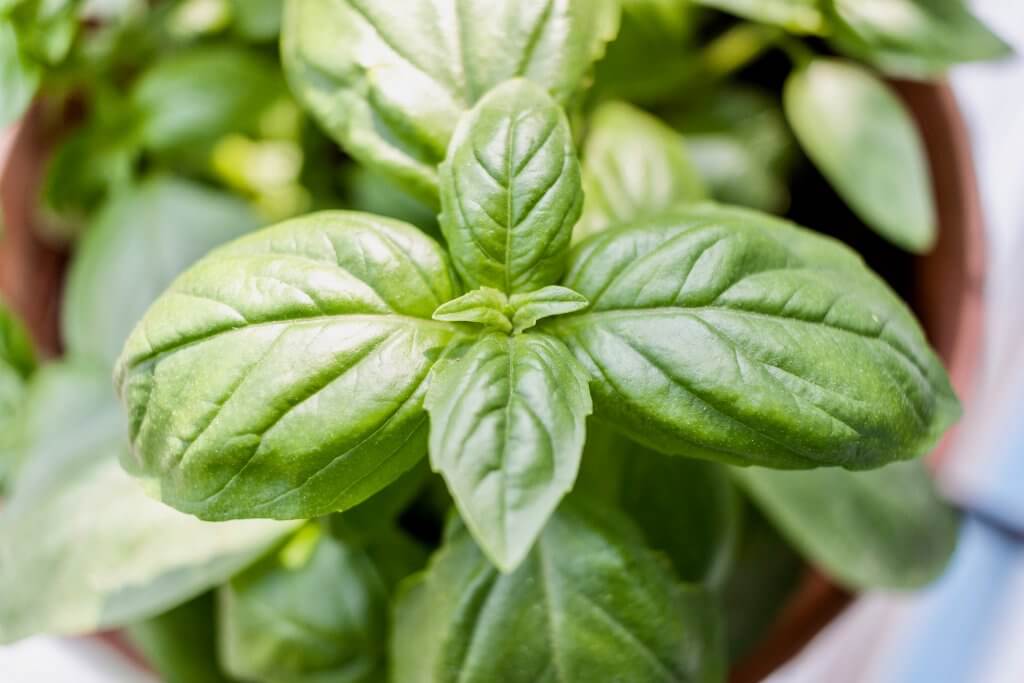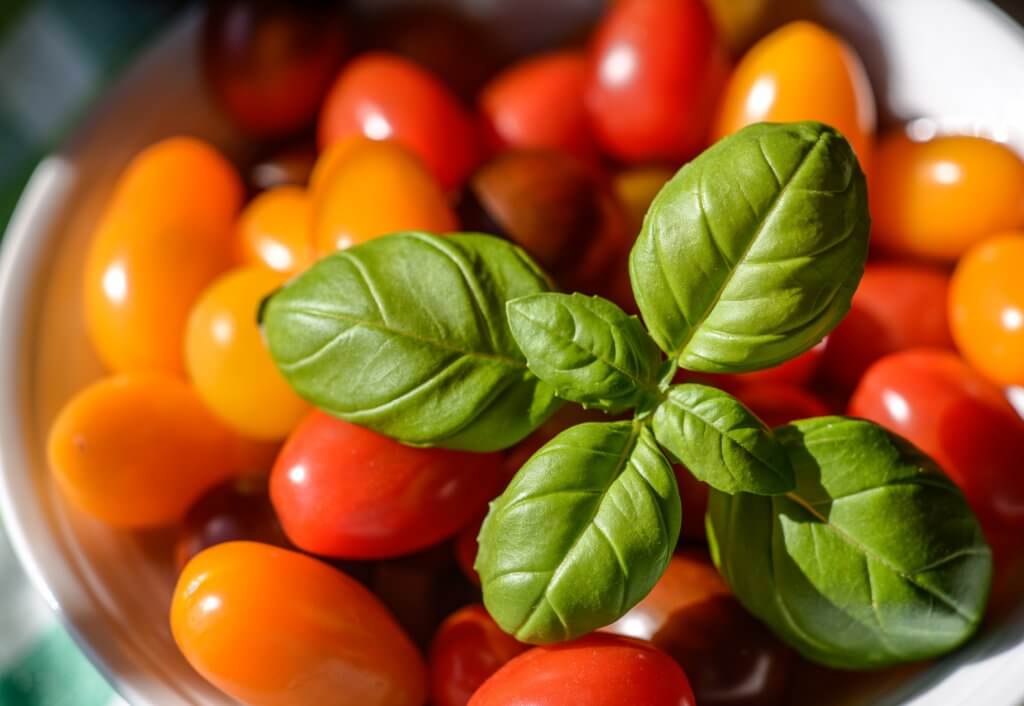
Basil (Ocimum basilicum) is a herbaceous plant that is no stranger to the kitchens of most individuals. Native to tropical regions of Central Africa and Southeast Asia, it is an extremely flavoursome herb used in a wide range of cuisines. It has a number of varieties and other names including, Great Basil, Sweet Basil, Lemon Basil and Holy Basil.
Usually reaching only a height of approximately 100cm, it is a popular addition in many kitchens and herb gardens. You may consider keeping basil on a kitchen window sill if you use it regularly within your cooking.
The oval shaped leaves are a deep, rich green and will often have a soft sheen. When flowering it produces a number of small white flowers that emerge from the growing tip of stem at the top of the plant.
Cultivation and History of Basil
Basil is an annual plant that must be reseeded each year. It is easy to seed and also to propagate. Basil trimmings will grow strong roots quickly when placed in a small container filled with water.
Different basil varieties have emerged over the years including sweet, lemon, Thai and purple basil, each with a slight difference in their dominant flavour. Sweet basil is the most common variety, it is a widely cultivated herb, used mainly for its leaves.
Warm climates are more preferable for growing basil as it does not fair well in the cold. When grown commercially it can usually be found in subtropical climates, like the Mediterranean.
Basil is usually associated with Italian and Mediterranean cooking, however many may be surprised to learn that it is said to have originated in India. From ancient times it has travelled along spice routes and now finds itself in the gardens all over the world.

Toxicity
Within food, basil has no toxic effects on humans, however warnings do exist that warn against using basil in high dosage amounts. Basil contains a chemical known as estragole which scientific evidence has shown can cause damage in the liver of mice when received in a high dose.
Uses
Culinary uses of basil
You will likely be familiar with a hugely popular product created using basil, pesto. The famous Italian sauce, a popular sauce used for roasting vegetables, or coating pasta. Other popular uses include adding flavour to soups, salads, and particularly dishes that feature chicken and/or tomatoes. It is also often used as a decorative garnish to give meals a more delectable appearance.
The flowers can also be eaten, however their flavour is more mild. Generally the flower buds are pinched off the plant to prolong the freshness of the leaves. Once the plant flowers it loses its essential oils which give it the notable aromatic flavour.
Basil freezes very well, so it has become a popular kitchen technique to ‘store’ chopped fresh basil in compact ice cubes, ready to use in dishes and meals at a later date.

Medicinal uses of basil
Basil has a history of being used to aid in a variety of medical situations, from stomach spasms, the common cold, intestinal problems, increasing blood flow and even warts. It also has a number of helpful medicinal qualities including anti-inflammatory and antimicrobial properties.
Basil also contains a number of antioxidants, which aid the body in protecting itself against free radicals from smoke and radiation. It also contains a variety of aromatic chemicals which help to repel insects, making it a great addition to a herb garden and which a number of studies have even concluded is toxic for mosquitos.
Did you know…
A number of Orthodox churches in Bulgaria, Romania and Serbia still use Basil today in the preparation of holy water.
Conclusion
Basil is an incredibly versatile plant and a herb garden simply wouldn’t be complete without it. It is easy to grow and seed within a window box or even on a kitchen windowsill, making it possible for those living without a garden to use and enjoy. Whether you use dried, frozen or fresh basil, it is a great herb to experiment with in the kitchen. From making your own pesto to trying it out in a fresh summer salad.
—————Written by Hannah Sweet
Hannah is a freelance writer and graphic designer from the UK. With a penchant for travelling, photography and all things botanical, she enjoys writing about a wealth of topics and issues, from conservation and slow living, to design and travel. Learn more about her writing and design services at www.sweetmeanders.co
Many of our readers find that subscribing to Eat The Planet is the best way to make sure they don't miss any of our valuable information about wild edibles.
See our privacy policy for more information about ads on this site






